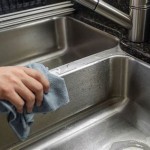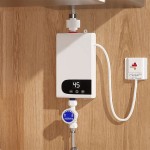Hooking Up A Kitchen Sink: A Comprehensive Guide
The kitchen sink is a vital component of any functioning kitchen. Its proper installation is crucial for convenient food preparation, cleanup, and general sanitation. This article provides a comprehensive guide to hooking up a kitchen sink, covering essential steps, necessary tools, and potential troubleshooting points.
Before beginning any plumbing project, it is imperative to understand local plumbing codes and regulations. These codes are designed to ensure safety and proper functionality. Consulting with a qualified plumber is also advisable, particularly for individuals unfamiliar with plumbing work.
Key Point 1: Preparation and Safety
Prior to commencing the installation, meticulous preparation is necessary. This involves gathering the required materials and tools, as well as implementing crucial safety measures.
The necessary tools typically include: adjustable wrenches, a pipe wrench, plumber's tape (Teflon tape), plumber's putty or silicone caulk, a screwdriver (Phillips and flathead), a bucket, rags or towels, a measuring tape, and a level. A hacksaw or pipe cutter may also be required depending on the existing plumbing setup.
Essential materials typically include: a new kitchen sink, a faucet (if not pre-installed in the sink), supply lines to connect the faucet to the water supply valves, a drain assembly (including a strainer, tailpiece, P-trap, and drain pipes), and mounting clips or hardware specific to the sink.
Safety is paramount. Before starting, turn off the water supply to the existing sink. This can usually be done by locating the shut-off valves under the sink. If shut-off valves are not present, the main water supply to the house must be turned off. Once the water is shut off, turn on the existing faucet to relieve any residual pressure in the pipes.
Place a bucket under the drain pipes to catch any remaining water. Disconnect the existing drain pipes using wrenches. Be prepared for some water to spill; have rags or towels readily available. Carefully remove the old sink. Depending on the type of sink and its mounting, this may involve unscrewing mounting clips or cutting through caulk. Dispose of the old sink properly.
Clean the countertop opening where the new sink will be installed. Remove any old caulk or debris. Check the dimensions of the opening to ensure it matches the specifications of the new sink. A proper fit is essential for a watertight seal.
Key Point 2: Faucet and Drain Assembly Installation
With the preparation complete, the next step involves installing the faucet and assembling the drain components.
If the faucet is not pre-installed in the sink, install it according to the manufacturer's instructions. This typically involves inserting the faucet through the designated holes in the sink and securing it with mounting hardware. Connect the supply lines to the faucet. Ensure that the connections are tight but not overtightened, as this can damage the fittings. Apply plumber's tape to the threads before connecting the supply lines.
Assemble the drain assembly, starting with the strainer. The strainer is the part that sits inside the sink basin and prevents large debris from entering the drain. Apply a bead of plumber's putty or silicone caulk around the underside of the strainer flange and insert it into the sink drain opening. From underneath the sink, attach the mounting hardware to the strainer, tightening it securely to create a watertight seal. Remove any excess putty or caulk.
Next, attach the tailpiece to the strainer. The tailpiece is a short pipe that extends down from the strainer. Connect the P-trap to the tailpiece. The P-trap is a U-shaped pipe that traps water and prevents sewer gases from entering the house. Use slip joint connections to connect the tailpiece and P-trap. Tighten the slip joint nuts by hand. Do not overtighten.
Extend the drain pipe from the P-trap to the main drain pipe in the wall. This may require cutting and fitting sections of drain pipe. Use a pipe cutter or hacksaw to cut the drain pipe to the correct length. Ensure that the cut is clean and square. Use PVC primer and cement to join the sections of drain pipe together. Allow the cement to dry completely before proceeding.
Verify that all connections are tight and secure. Apply plumber's tape to any threaded connections to ensure a watertight seal.
Key Point 3: Sink Mounting and Final Connections
The final stage involves mounting the sink into the countertop opening and connecting the water supply and drain lines.
Carefully place the sink into the countertop opening. For undermount sinks, apply a bead of silicone caulk around the underside of the countertop opening before installing the sink. This will create a watertight seal. Secure the sink using the mounting clips or hardware provided. Ensure that the sink is level. Use a level to check the sink from multiple angles.
Connect the water supply lines from the faucet to the shut-off valves under the sink. Ensure that the hot and cold water lines are connected to the correct valves. Use adjustable wrenches to tighten the connections. Do not overtighten. Apply plumber's tape to the threads before connecting the supply lines.
Inspect all connections for leaks. Turn on the water supply slowly. Check for leaks around the faucet, supply lines, drain assembly, and sink perimeter. If any leaks are detected, tighten the connections or reapply plumber's tape or caulk as needed. It is crucial to address leaks promptly to prevent water damage.
Run water into the sink and check for proper drainage. Ensure that the water flows freely through the drain and that there are no leaks in the drain pipes. If the drain is slow or clogged, check the P-trap for obstructions. Disassemble the P-trap and remove any debris.
Once the sink is properly installed and all connections are leak-free, clean up the work area. Dispose of any waste materials properly. The new kitchen sink is now ready for use.
If any persistent issues arise during the installation, consulting with a qualified and licensed plumber is highly recommended. Attempting complex plumbing repairs without the necessary experience can lead to further damage and costly repairs.
Proper maintenance of the kitchen sink can extend its lifespan and prevent common problems. Regularly clean the sink to remove food debris and prevent clogs. Avoid pouring grease or oil down the drain, as this can solidify and cause blockages. Flush the drain with hot water periodically to keep it clear.
This guide provides general instructions for hooking up a kitchen sink. Specific installation procedures may vary depending on the type of sink, faucet, and plumbing system. Always refer to the manufacturer's instructions for detailed guidance.

How To Connect A Kitchen Sink Drain
How To Install A Kitchen Sink Drain

Installing A New Sink 11 Things To Watch Out For Family Handyman

How To Install A Kitchen Faucet The Home

Simple Steps To Install A Kitchen Sink Basin Lesso Blog

How To Install Kitchen Sink Drain For Beginners

How To Easily Connect The Plumbing For A New Bathroom Sink Hometips

How To Connect A Kitchen Sink Drain 2024

How To Install A Kitchen Sink Drain With Pictures Wikihow

Plumbing How To Remove Rusted Remains Of Kitchen Sink Tailpiece Home Improvement Stack Exchange







